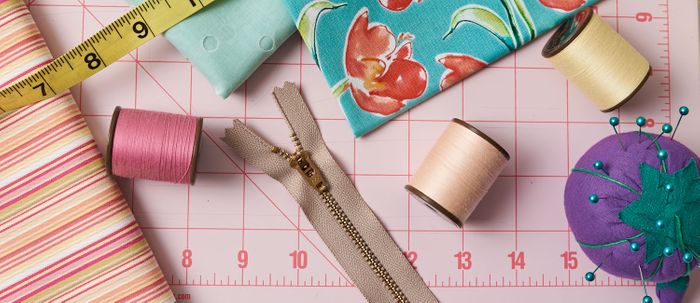Sewing Thread Fibers and Special Types

Although matching thread fiber types to fabric fiber seems logical, choosing the appropriate thread by characteristics such as strength, colorfastness, or chemical resistance is more practical. In general, natural fiber threads such as cotton, linen, silk, and rayon (a manufactured fiber made from natural cellulose) sew beautifully. But synthetic fibers like polyester, nylon, or acrylic are stronger. Learn more about how to choose thread types in Thread Essentials.
Cotton thread
Made from spun staple cotton fibers (Egyptian long staples are about 11⁄4 inches long and American pima staples are about 11⁄2 inches long). Cotton thread has little stretch, limited strength, and (in comparison to other fibers) can produce a lot of lint. It also has a low sheen. Use cotton thread for heirloom sewing, decorative stitching or embroidery, sewing lightweight natural fibers, patchwork, and quilting.
Cotton-wrapped polyester thread
Made by wrapping a continuous polyester filament with staple cotton, this thread has the benefits of polyester and the look of cotton. Use for all-purpose sewing.
Nylon thread
Made from extruded filaments, nylon threads come in a variety of forms that are very strong and rot-resistant:
• Monofilament is a single filament and comes in a wide range of weights. Use a lightweight version for invisible sewing and blind hems, or encase a heavier version inside a rolled stitch to support fluted or ruffled edges.
• Texturized threads (such as woolly nylon) are continuous multifilaments that stretch into a fine, strong thread and then expand to a full, fluffy appearance when relaxed. Use them for serged seams, decorative stitching, and rolled hems.
• Upholstery threads are often nylon. They come in limited colors, are extremely strong, and will withstand the rigors of outdoor use. Upholstery thread is easy to sew with but the ends ravel and are difficult to knot.
Polyester Thread
The garment industry often uses…
Start your 14-day FREE trial to access this story.
Start your FREE trial today and get instant access to this article plus access to all Threads Insider content.
Start Your Free TrialAlready an Insider? Log in





Log in or become a member to post a comment.
Sign up Log in